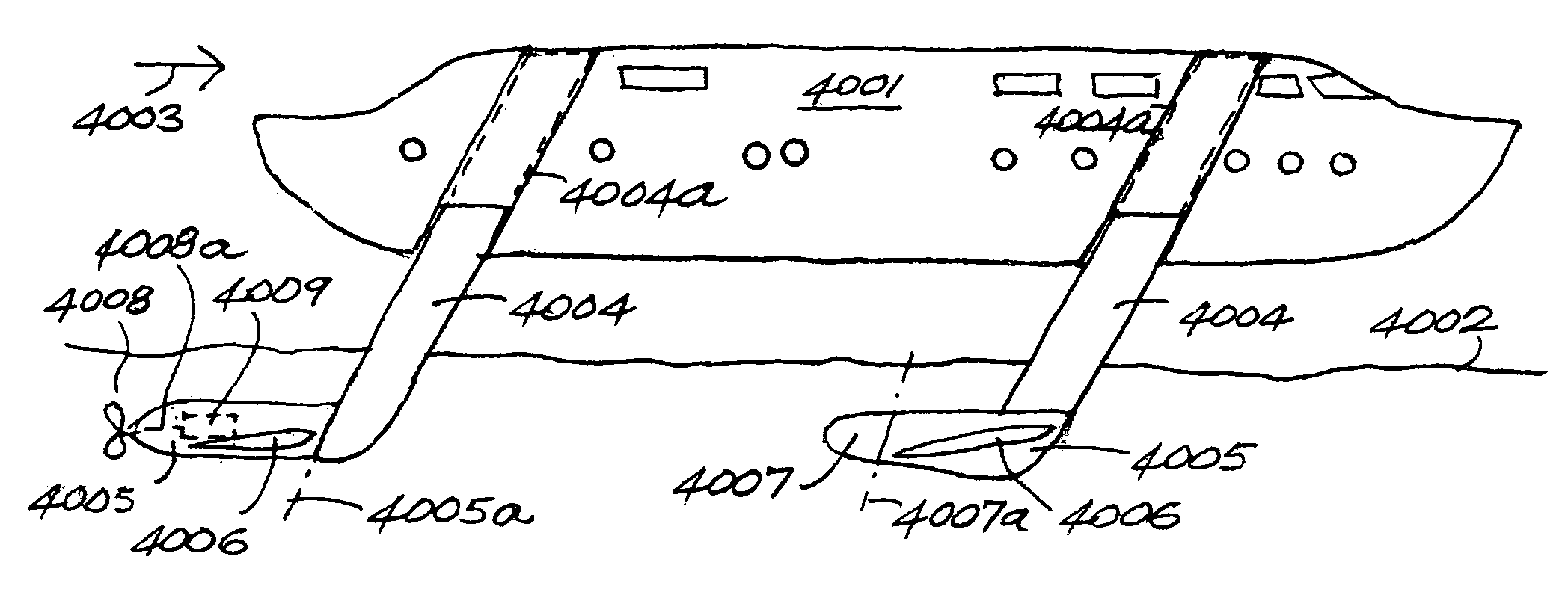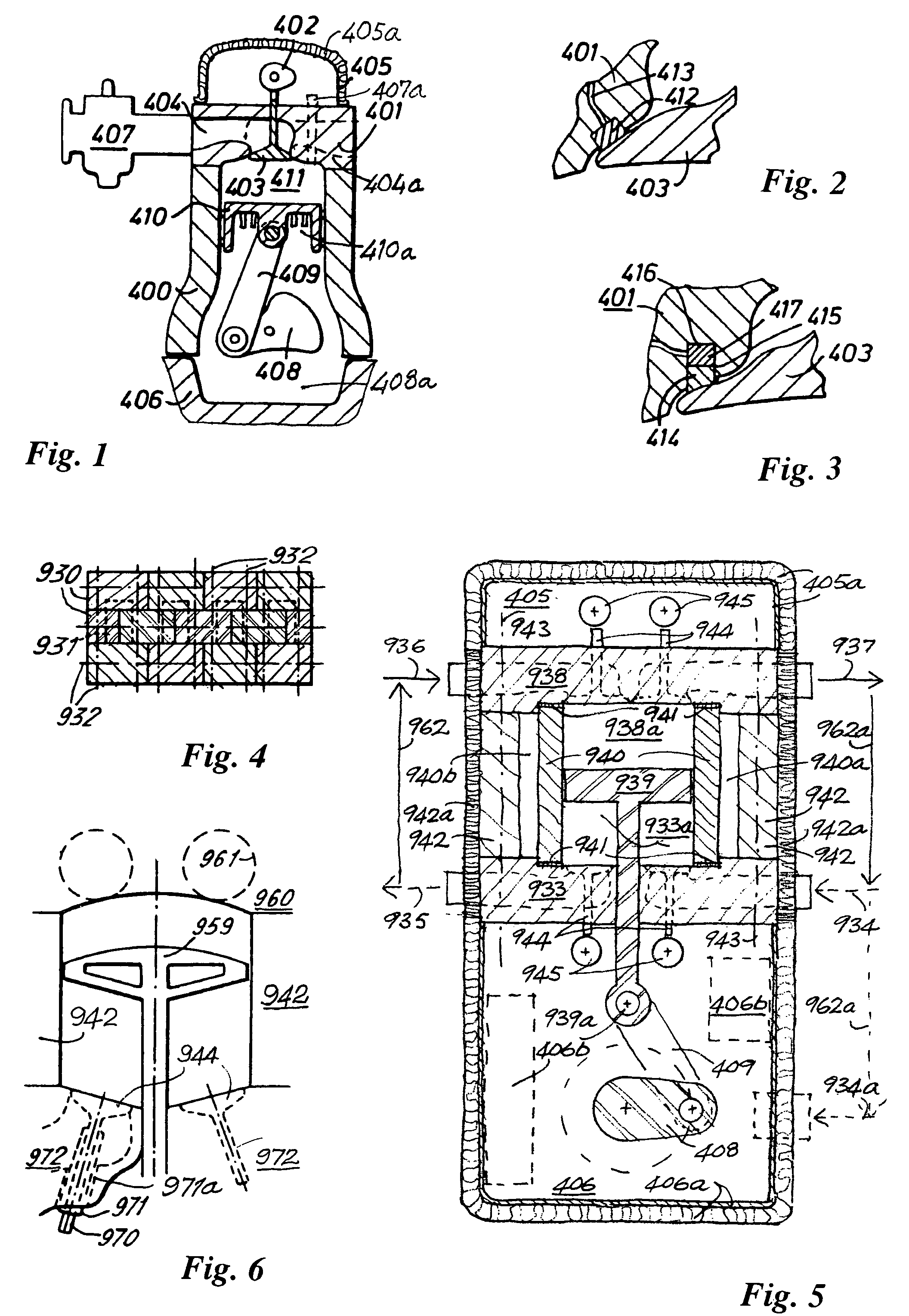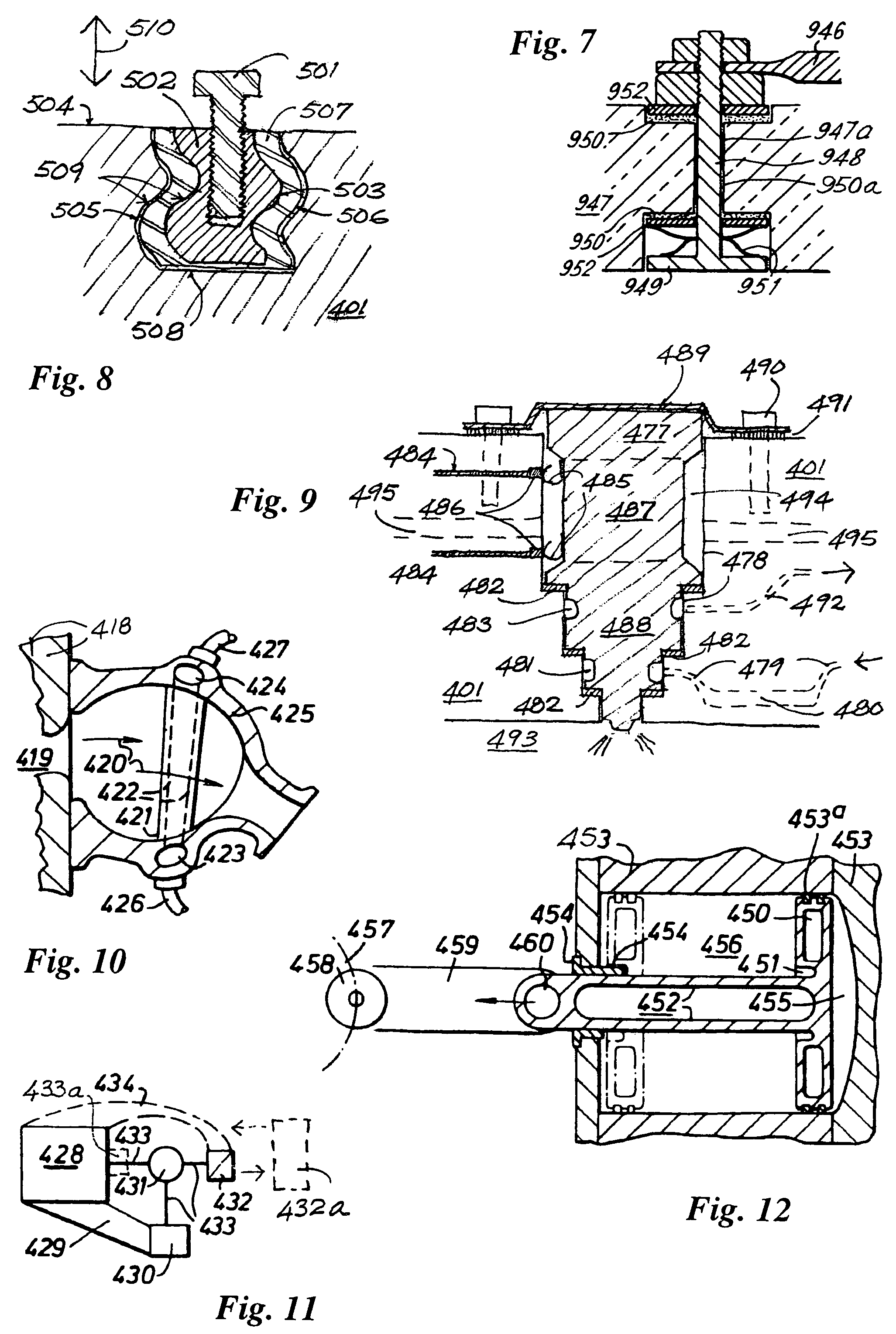Marine hulls and drives
a technology of hulls and drives, applied in the field of pumps and combustion engines, can solve the problems of engine running colder and therefore less efficient, heat product, and unsatisfactory fact, and achieve the effects of reducing co2 emissions, high power density, and improving efficiency
- Summary
- Abstract
- Description
- Claims
- Application Information
AI Technical Summary
Benefits of technology
Problems solved by technology
Method used
Image
Examples
Embodiment Construction
[0012]An important objective of the invention is to provide at engines having greater power-to-weight ratios, power-to-bulk ratios, and substantially greater efficiencies than equivalent contemporary units. This is achieved by four principal means: (1) the rearrangement of the components associated with a single piston / cylinder into a more compact and simple configuration, (2) the reduction in most applications of the number of piston / cylinder assemblies required, (3) the substantial reduction of reciprocating masses, and therefore the reduction of size and mass of key structural components, (4) the virtual elimination of heat loss from the system, thereby increasing temperatures during combustion and therefore efficiency.
[0013]In order to raise the ambient temperatures in the combustion volume to increase thermodynamic efficiency, and in order to eliminate the dissipation of heat energy (part of the fuel energy) via general radiation and the cooling system, it is proposed to entire...
PUM
 Login to View More
Login to View More Abstract
Description
Claims
Application Information
 Login to View More
Login to View More - R&D
- Intellectual Property
- Life Sciences
- Materials
- Tech Scout
- Unparalleled Data Quality
- Higher Quality Content
- 60% Fewer Hallucinations
Browse by: Latest US Patents, China's latest patents, Technical Efficacy Thesaurus, Application Domain, Technology Topic, Popular Technical Reports.
© 2025 PatSnap. All rights reserved.Legal|Privacy policy|Modern Slavery Act Transparency Statement|Sitemap|About US| Contact US: help@patsnap.com



